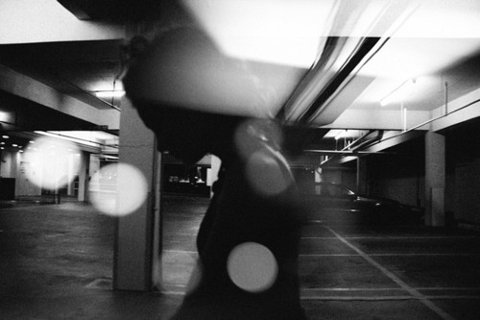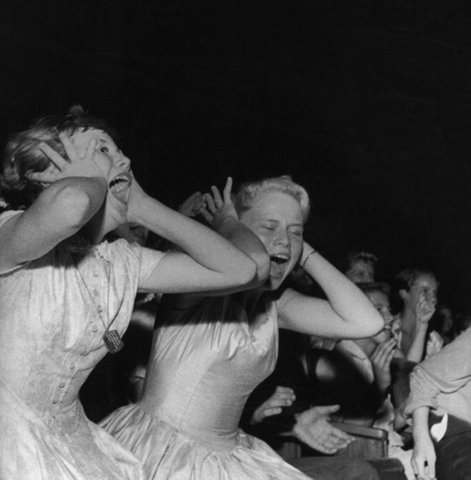Based on a talk by Michael Stone delivered at Centre of Gravity, Toronto.
Burn Out
I think for many of us burn out is something we don’t recognize. The first form of burn out is vital exhaustion. It’s caused by the internalized belief that you need to fix others. Has anyone ever tried to fix their parents? Internalized family systems can make us think we’re not doing enough. It can hard to measure, even to recognize, how heavy the burden is you’re carrying. This is the first cause of vital exhaustion.
The second is secondary trauma, or vicarious trauma. Secondary trauma can happen even if you have no history of trauma. In a situation where there’s violence, often the people who are most traumatized are the witnesses. The people going into prisons hear the stories of young boys and girls already in prisons. They can become exhausted and traumatized as they replay those stories over and over, unable to metabolize them. There’s an echo of this for those of you who teach in yoga studios where you actually have relations with your students and start hearing why people are coming.
In psychotherapy we have what’s called the presenting symptom. The presenting symptom is: I need some exercise because work is really stressful and my hamstrings are tight. But when you get to know people you find out that they’re coming because they’re suffering. If they were content they wouldn’t be coming. And when you really open through empathy with people who have been traumatized, we can easily become traumatized vicariously. The problem with empathy is that we empathize with people’s joy or sorrow neurologically. There’s not a clear distinction between self and other. You can feel someone’s sorrow and joy, you’re merged with them in empathy, and that’s why empathy is the number one cause of burn out.
I spent some time this summer with Mathieu Ricard, Time Magazine just called him the happiest man on earth, because they asked the Dalai Lama who is the happiest man on earth and he said Mathieu. He volunteered for a neuro-science study where they hooked him up and gave him pictures of imaginary situations, like his mother in a car accident. Or images of war. They were measuring his levels of empathy and by the end of the morning he was totally exhausted and had to go rest for a couple of days. We call this empathy fatigue. Empathy is not connection, it’s merger.
Compassion is when you feel what you feel in empathy, but you’re separate. Because you’re taking care of yourself, there’s a healthy boundary, you have an ego. This idea of getting rid of your ego is a recipe for psychosis and burn out. The only people I’ve ever met who don’t have an ego are institutionalized. I think right now we have this post-Freudian idea that either you need a strong ego or to get rid of your ego. But in traditional teachings it’s never talked about like that. This idea of getting rid of your ego is totally absurd, your ego is hilarious, it’s the source of your humour, it’s one of your great assets. The point is one of the ways we burn out is by not having an ego, this is pathological altruism, it’s reading too many stories about saints and trying to live in an idealistic way.
If you can’t take care of yourself you can’t take care of others. You take care of this body and you’re taking care of the earth. You take care of the earth and you’re taking care of this body. Imperfectly.
The third form of burn out is what I’d like to call neural distress. It means being overloaded because of systematic imbalance. Those of us working in hospitals where the ethic of the hospital does not match our internal moral compass. We’re working for an oil company where the motivation for shareholders does not match our internal commitment to not cause harm. We keep doing it because we’re scared and making money. We’re a victim to the persona our profession affords us at the dinner table with our family who are so proud of us for being lawyers and doctors. But traditionally yogis dropped out so they could enter the culture in a deeper way.
Number four. Horizontal hostility. You find this mostly in the nursing literature. In the United States 28% of nurses quit their jobs because of horizontal hostility. This is a form of burn out where your peers marginalize you. In the passive-aggressive world of yoga studies the number one cause of frustration is the inability to communicate in studio culture with your peers. You get pressure to lead or teach in a certain way without communicating your ideals or sharing your beliefs.
The last one is structural violence. Systems that discriminate against whole groups of people. If you’re gay, fat, black or brown. Wherever the line is drawn between who is human and who is not fully human. And this line is being drawn all the time.
Three Poisons
One of the things that keeps karma going are the three poisons: greed, hatred and delusion. We think of those qualities living inside us, don’t we? But all of those poisons are also institutionalized. What keeps corporations going are these poisons. So it’s not enough just to work on the poisons inside us, we have to work on systematic toxicity that leads to burn out.
I’m trying to speak in contemporary terms about dukkha, about stress and feelings of lack that are caused not just from our pasts but the institutions we’ve made. That’s why our work needs to happen on both levels, inside and out. It is the social and ecological fabric that nourishes us. There is a saying that there are 84,000 dharmas, and my challenge to you is that if there are 84,000 dharmas, or practice doors, all you need to do is enter one. Just enter one so that you can really enter your life, and when you enter your life you enter the lives of others.
One of my favourite sentences is the third line of the Yoga Sutra: tada drastuh svarupe avasthanam – self form abides in the one who sees. When you practice yoga, and you’re not identifying with everything that moves through your awareness, the one who is thinking, breathing, listening abides in their own self form. This is a disappointment for those of you who are into spirituality. What you’re supposed to say is that when you don’t identify with what moves through awareness you have an awakening, and you become God, connected to all the virgins. You become one with everything, you can eat vegan food forever, menopause ends. But that’s not what Patanjali says. He says that you abide in your form. What? Abide in my form, the reason I came here was because I want to be free of this.
Patanjali says you fully enter and embody your ego and idiosyncracies. That’s why you start with your body. The goal is to fully abide in your body.
Ego
In the Satipatthana Sutta, the Buddha’s teaching on mindfulness, he says the same thing: to be in the body as a body. Nowhere does he say that you leave your body. Nowhere does Patanjali say that you get rid of your ego. You don’t want to walk out on the street and be one with the street car. When I eat breakfast your stomach does not get filled up. There’s a place where I end and you start. And though that’s linguistic, and conceptual and relative, it exists. For Patanjali we embrace that, and the more we practice the more our ego becomes porous. We watch it operating from moment to moment making its ridiculous inflations and deflations, and we embrace it. And then you become one with your ego, which is not even yours. And then you see what your life is. Cancer is not my life. Anger is not my life. The years I spent in prison is not in life. Well yes it is, all of that is your life, to be one with all the parts of your lives you don’t want to be one with.
You know when people come in off the street not in tune with their interconnectedness, they hear about dukkha and think this is the most pessimistic philosophy I’ve ever heard. I’m just going to do pilates and hang out at Urban Herbivore and feel good. When you reach a stage of maturity in your practice, where you realize that interconnectedness is more valuable than just feeling good, then your practice starts taking off because it includes others.
Non-violence
Soen Roshi writes, “All beings are flowers, blooming in a blooming universe.” Patanjali says it in a different way. He says that when you are grounded in non-violence, you create the conditions for others to let go of their hostility. They’re both saying something here about non-violence, aren’t they? We think oh when I’m grounded here in non-violence then I’m going to get enlightened. It benefits me. When I’m not living at the expense of others then I get some merit and then I’m really spiritual and can start teaching and get a book grant and start marketing my yoga teachings.
Patanjali says that when you’re fully grounded in not living at the expense of others then you create an atmosphere, a vibe, where others can let go of their hostility. If we keep sending people to prison, we’re not creating an environment where the prisoners can let go of their hostility. If we keep building nuclear weapons we can’t go into other countries and tell them they have to stop building nuclear weapons.
Karma reminds us that we’re so interconnected and that everything we do matters. When you come here and sit still and pay attention you’re planting seeds, samskaras, neurologically, in your mind and body, so that you can cultivate equanimity. This gathering is a form of social action because we’re being still. We’re planting stillness in the mind, the body and the body politic. You can’t separate them.
Service
I’ve been obssessed this summer with Martin Luther King’s speeches. Most of you know his I Have a Dream speech, some of you off my heart maybe, but the speech where he talks about community is my favourite, it’s from Riverside church in New York City. He ends this speech by saying we can all be great because we can all serve. Not because we have a PhD, not because your studio is the most popular, not because you finally got a Range Rover. We can be great because we can all serve. But you can’t serve if you’re not taking of yourself. You can’t serve if you’re suffering from structural violence and horizontal violence, or from internalized ideas that you’re not doing enough. You have to know what you can do and go to work, and for some of us that means being connected to what nourishes us and where we need healing.
Yoga has many tools, not just headstands, to really help us. A headstand is not going to help prisoners. Doing 108 sun salutations every day is not going to help you with people you don’t get along with. We need lots of tools and the yoga tradition has many of them because we need to serve, it makes us joyful.
Community
I don’t know if any of you have looked at my schedule, it scares me to see it. When people look at my website they ask: how do you have energy to do this? I’ve been in rooms like this since Tuesday. I get so much energy because I feel that we can develop a grass roots yoga community that crosses ecumenical boundaries, that is secular, rooted in a seculum, in this time. A yoga that responds to this time. A prison dharma. A hospital dharma. So that our yoga studies become community centres where we’re reaching out to people who need to be in touch with their bodies. I think we can develop in our yoga community centres a core of practitioners that are training to be peace makers by really learning what meditation is. By learning how to be still in a very rigorous way, by learning traditional teachings of pranayama and asana, to go deep into the body so we can know the body as a body.
If you have a kitchen in your yoga studio and make breakfast then people will start coming. We can use that studio to start reaching beyond the boundaries of people who can afford to come, so that we can have events that don’t cost any money. Movie nights. Child care. Courses in money management and contraception, sex ed. What does sex ed mean when it’s grounded in the principle of not causing harm? What does learning to manage money mean when it’s grounded in the principle of non-greed? We can put these yoga theories to work in our communities so that we can wake up, not just individually but as a culture. What could be more exciting? But when we keep operating out of individual happiness we get exhausted.
The last thing I’ll say is that I also don’t want to make this sound like you go out into the world and fix things. Find really good teachers. Don’t make up your own practice. Find good teachers and put in some years with them. Find a community and if you can’t, start one and practice rigorously. So that at the heart of this, we are really training. Sometimes when I read texts like the Pali canon I read about the Buddha entering a city, and I picture a thousand monks in robes walking into a city, to me that’s a non-violent military. Can we start that?
Resistance
Committing to practice means committing to resistance because there’s a natural resistance to practice which is the resistance to change. The resistance to practice should always be there because it shows us that we’re changing. If our practice is not really changing us, then there’s no resistance. The same is true in our culture. For us to change yoga studio models, to change prison models, there will be resistance. When we start feeling resistance we need to be excited, because this is when something’s really working. This is inspiring and resistance is a fuel to generate kindness so that our practice becomes a kindness gymnasium, where we’re working our kindness muscle so it’s there for us when the hard times show up. And it’s fun.
The question is about resistance, surrender, the path of least resistance. There’s a part of all of us that doesn’t want to change. Patanjali identifies this and calls it Abhyasa and Vairgya which means practice and non-attachment. The practice of non-attachment. And then practicing non-attachment to your practice of non-attachment.
Non-attachment means not getting stirred up. When we’re not stirred up it means we’re fully engaged. So non-attachment is samadhi, it’s the integration, sam where we get the word com like community, and adhi, one, the integration, coming together as one, community, it’s the falling away of us and them, subject and object. Practicing non-attachment means not clinging to your view, not being attached to your particular position. Being able to surrender your position, to let go so you can really listen.
New Approach
I once asked Ted why he started Moksha Yoga and he said I was burnt out by the activist person who I became and I needed to look after myself. Not clinging to an outcome, not clinging to your position opens you up so you can really see, vidya, how things are, and then you’re engaged. It sounds like a paradox, that non-attachment is engagement, but we all know that when we’re not clinging to the way we need things to be, we’re more engaged as parents with our kids. When we surrender and let go of needing our mother to be a mother, then you can start to see her, you can see a person there, underneath all that scaffolding that’s built over all those years, and your heart can open, and this is intimacy, this is yoga, this is samadhi, this is community, this is revolution.
And what we’re resisting is any place in our body and our culture where things are fixed, and we’re stuck, and we’re not fluid. We resist and that resistance is yoga. How do you let go? By action. People often ask me: is this going to help? And my response is: I don’t know. But because it’s a new approach, it will bring a new result, so let’s see. I vow to stop sending people to prisons. Can we make this a vow? Let’s vow for these people who are in prisons to get some of our attention. I don’t mean seeking them out and meeting them in our communities. But in your daily life, to not live in a way that supports a system that keeps putting people in jail and maybe that means opening up your kitchen and feeding people, maybe it means going into schools so that students can settle their minds and have less anxiety. Let’s go into communities that have less privilege and offer what we can offer. Let’s work to change the conditions that are sending so many kids to prison.


